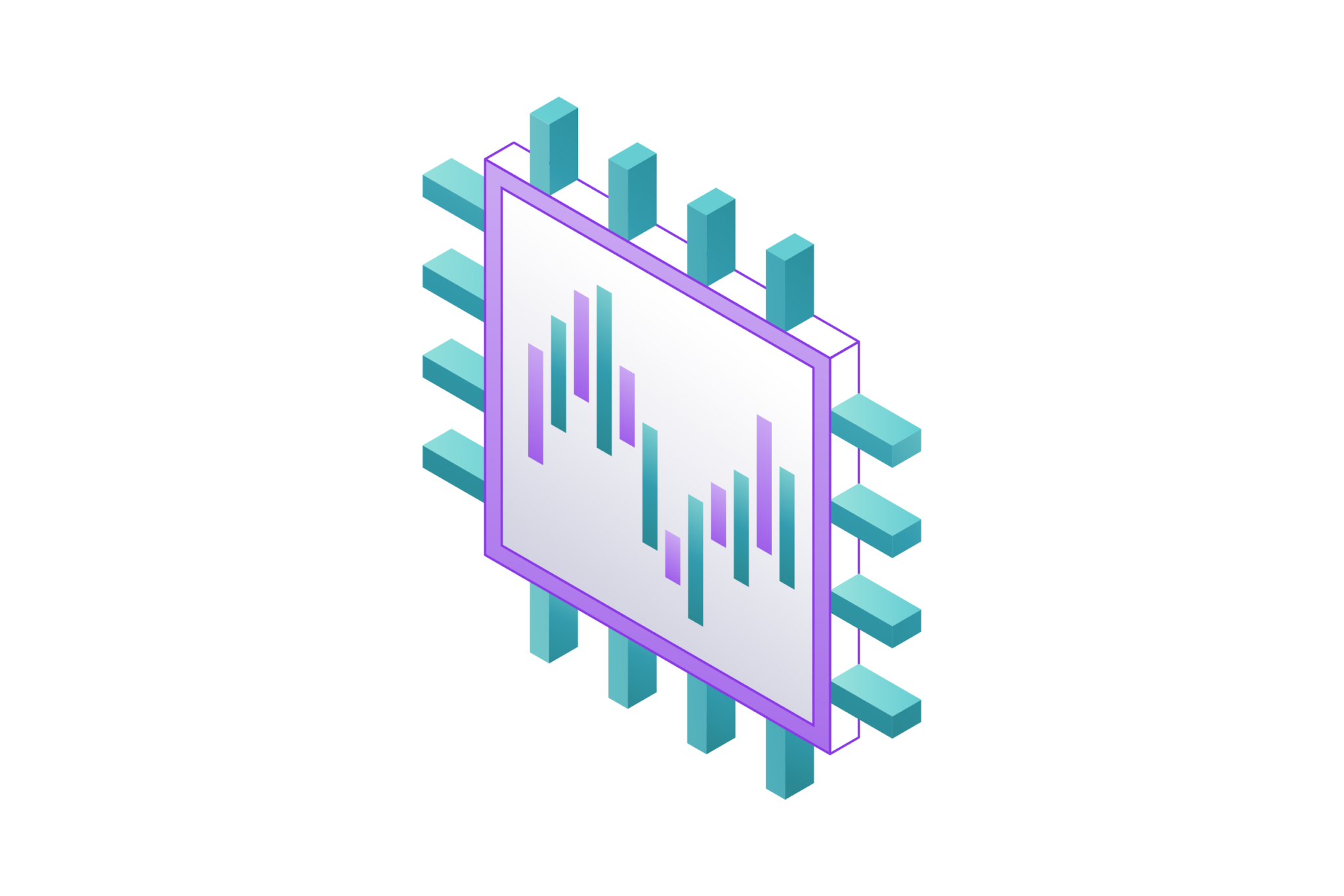
Market microstructure is a crucial yet often overlooked aspect of financial markets. It involves the study of the processes and mechanisms that facilitate the trading of financial securities. Understanding market microstructure helps in comprehending how prices are determined, how trades are executed, and how different participants interact within the market.
At its core, market microstructure deals with the micro-level functioning of markets. This includes the role of various intermediaries like brokers and market makers, the impact of different trading venues, and the technological advancements that have revolutionized trading. By examining these elements, one can gain insights into the efficiency, liquidity, and transparency of financial markets.
Moreover, market microstructure has significant implications for all market participants, including individual investors, institutional investors, regulators, and policymakers. A well-functioning market microstructure ensures that markets are fair, transparent, and efficient, which ultimately benefits the overall economy.
What is Market Microstructure?

Market microstructure refers to the study of the processes and mechanisms that facilitate the trading of financial securities. It encompasses the detailed examination of how orders are placed and executed, how prices are determined, and how various market participants interact. This field of study focuses on the “micro” aspects of trading, as opposed to the broader “macro” economic factors that influence financial markets.
Market microstructure plays a crucial role in the price discovery process, where the prices of securities are determined based on supply and demand dynamics. Efficient price discovery is essential for investors to make informed decisions.
By understanding market microstructure, one can gain insights into the liquidity of the market, which refers to the ease with which assets can be bought or sold without significantly affecting their prices. High liquidity generally indicates a healthy market where transactions can be executed quickly and at stable prices.
The study of market microstructure helps in analyzing the various costs associated with trading, including explicit costs like commissions and implicit costs such as the bid-ask spread and market impact costs. Reducing these costs can lead to more efficient trading.
Also Read: 17 Best Crypto Staking Platforms to Know in 2024
Regulators use insights from market microstructure to develop rules and policies that ensure fair and transparent trading practices. This helps in protecting investors and maintaining market integrity.
Understanding market microstructure is essential for anyone involved in the financial markets, from individual investors to institutional traders and regulators. It provides a detailed view of the inner workings of the market, enabling participants to make better-informed decisions and contributing to the overall stability and efficiency of financial markets.
Key Components of Market Microstructure

Market microstructure encompasses several key components that collectively influence how financial markets operate. These components include the trading mechanisms, market participants, order types, and information dissemination processes.
1. Trading Mechanisms
Trading mechanisms refer to the rules and systems that govern how trades are executed. There are various types of trading mechanisms, including auction markets, dealer markets, and electronic trading platforms. Each mechanism has its own set of rules that determine how orders are matched and how prices are set.
2. Market Participants
Market participants play a vital role in market microstructure. These participants include individual investors, institutional investors, brokers, market makers, and high-frequency traders. Each type of participant has different objectives and strategies, which can influence market behavior and liquidity.
3. Order Types
The types of orders placed in the market can also impact its microstructure. Common order types include market orders, limit orders, stop orders, and iceberg orders. The choice of order type affects how quickly a trade is executed and at what price, thereby influencing the overall market dynamics.
4. Information Dissemination
The way information is disseminated and processed in the market is a critical aspect of market microstructure. Efficient markets rely on the timely and accurate dissemination of information, allowing participants to make informed trading decisions. This includes both public information, such as economic data and corporate announcements, and private information, which might be accessible only to certain market participants.
Understanding these components helps in analyzing the complexities of financial markets and the factors that drive their behavior. Each component interacts with the others, creating a dynamic and often unpredictable trading environment.
The Role of Market Makers and Brokers
Market makers and brokers are fundamental players in the financial markets, each serving distinct yet complementary roles that help ensure market efficiency and liquidity.
Market Makers
Market makers are firms or individuals that continuously buy and sell financial securities to provide liquidity to the markets. They quote both a buy price (bid) and a sell price (ask) for securities, earning a profit from the spread between these prices. Market makers are essential for maintaining liquidity, especially in less frequently traded securities. By being willing to buy and sell at any time, they ensure that there is always a counterparty available for traders looking to enter or exit positions.
Market makers also play a crucial role in price discovery. By continuously quoting prices, they help in reflecting the supply and demand dynamics of the market. Their activities can reduce volatility and help in stabilizing prices during periods of high uncertainty.
Brokers
Brokers act as intermediaries between buyers and sellers in the financial markets. Unlike market makers, brokers do not trade on their own account but facilitate trades on behalf of their clients. Brokers provide a range of services, including executing buy and sell orders, offering investment advice, and providing access to research and market data.
Brokers can be classified into full-service brokers and discount brokers. Full-service brokers offer a comprehensive suite of services, including personalized advice and portfolio management, while discount brokers provide a more cost-effective solution, focusing primarily on trade execution.
Differences and Interactions
While market makers and brokers have different roles, they interact closely in the market ecosystem. Brokers often rely on market makers to provide liquidity for their clients’ trades. In turn, market makers depend on brokers to bring in order flow, which is essential for their market-making activities.
Understanding the roles and interactions of market makers and brokers helps in appreciating how liquidity and efficiency are maintained in the financial markets. Their activities ensure that markets function smoothly, allowing investors to buy and sell securities with ease.
The Impact of Technology on Market Microstructure

Technological advancements have profoundly transformed market microstructure, bringing about significant changes in how financial markets operate. These changes have improved efficiency, transparency, and accessibility, but they have also introduced new challenges and complexities.
1. Electronic Trading Platforms
The shift from traditional floor trading to electronic trading platforms has been one of the most significant technological advancements. Electronic trading platforms enable faster and more efficient trade execution, reduce transaction costs, and increase market accessibility for a broader range of participants. These platforms use sophisticated algorithms to match buy and sell orders, ensuring that trades are executed at the best possible prices.
2. Algorithmic and High-Frequency Trading
Algorithmic trading involves the use of computer algorithms to automate trading strategies. These algorithms can analyze vast amounts of data and execute trades at speeds impossible for human traders. High-frequency trading (HFT) is a subset of algorithmic trading that involves executing a large number of orders at extremely high speeds, often within microseconds. HFT firms seek to profit from small price discrepancies that exist for very short periods.
While these technologies have increased market liquidity and efficiency, they have also raised concerns about market stability and fairness. The rapid speed of trading can exacerbate market volatility and lead to events like the “flash crash,” where prices plummet and recover within minutes. Additionally, the competitive advantage of HFT firms can disadvantage slower market participants.
3. Market Data and Analytics
The availability and analysis of market data have been revolutionized by technology. Real-time data feeds, advanced analytics tools, and big data technologies allow market participants to make more informed decisions. Traders can analyze market trends, monitor order flows, and assess the impact of news and events on asset prices in real-time.
4. Blockchain and Distributed Ledger Technology
Blockchain and distributed ledger technology (DLT) have the potential to further revolutionize market microstructure by providing a transparent, secure, and efficient way to record and verify transactions. These technologies can reduce the need for intermediaries, lower transaction costs, and enhance the speed and security of trade settlements. While still in the early stages of adoption, blockchain-based systems are being explored for various applications, including securities trading and settlement.
5. Regulatory Technology (RegTech)
Regulatory technology, or RegTech, refers to the use of technology to help firms comply with regulatory requirements more efficiently. RegTech solutions can automate compliance processes, monitor trading activities for signs of market abuse, and ensure that firms adhere to evolving regulatory standards. This not only reduces the cost and complexity of compliance but also enhances market integrity and investor protection.
The impact of technology on market microstructure is profound and multifaceted. While it has brought about numerous benefits, it also requires continuous adaptation and vigilance to address emerging risks and challenges.
How Market Microstructure Affects Investors

Market microstructure significantly impacts investors, influencing how they trade, the costs they incur, and the overall experience they have in financial markets. Understanding these effects can help investors make more informed decisions and navigate the complexities of modern markets.
1. Trading Costs
One of the most direct impacts of market microstructure on investors is the cost of trading. Trading costs include explicit costs like commissions and fees, as well as implicit costs such as the bid-ask spread and market impact costs. The bid-ask spread, the difference between the buy and sell prices quoted by market makers, can vary depending on market liquidity and volatility. High-frequency traders and market makers play a role in tightening these spreads, potentially reducing costs for investors.
2. Liquidity
Liquidity refers to the ease with which an asset can be bought or sold in the market without significantly affecting its price. A liquid market allows investors to execute large trades quickly and at stable prices. Market microstructure influences liquidity through the activities of market makers, the presence of various trading venues, and the overall level of market participation. Improved liquidity benefits investors by providing more opportunities to enter and exit positions at desired prices.
3. Price Discovery
Market microstructure affects the process of price discovery, which is how the market determines the price of a security based on supply and demand. Efficient price discovery ensures that asset prices reflect all available information, allowing investors to make well-informed decisions. Factors such as the speed of information dissemination, the transparency of trading processes, and the diversity of market participants all contribute to effective price discovery.
4. Market Transparency
Transparency in financial markets refers to the availability of information regarding prices, trading volumes, and order flows. High levels of transparency enable investors to understand market conditions better and make more informed trading decisions. Advances in technology and regulations aimed at improving market transparency have enhanced the ability of investors to access real-time data and monitor market activities.
5. Market Efficiency
Market efficiency is the extent to which asset prices fully reflect all available information. Efficient markets allow investors to trade securities based on their true value, reducing the likelihood of mispriced assets. Market microstructure elements such as trading mechanisms, order types, and market participants’ behavior play a crucial role in determining market efficiency. More efficient markets lead to fairer trading environments and better investment outcomes.
6. Risk Management
Market microstructure also impacts the ability of investors to manage risk. The availability of different order types, such as limit orders and stop orders, allows investors to implement strategies to protect against adverse price movements. Additionally, the liquidity and transparency of the market can influence the effectiveness of risk management techniques. Investors need to understand the microstructural aspects of the markets they operate in to manage their risks effectively.
By understanding how market microstructure affects these aspects of trading, investors can better navigate the financial markets and optimize their trading strategies to achieve their investment goals.
Also Read: How to Succeed in a Quant Hedge Fund: Strategies and Tips
Regulatory Aspects of Market Microstructure
Regulatory frameworks play a crucial role in shaping market microstructure, ensuring that financial markets operate in a fair, transparent, and efficient manner. Regulators focus on various aspects, including market integrity, investor protection, and systemic stability.
1. Ensuring Market Integrity
Regulators aim to maintain market integrity by preventing fraudulent and manipulative practices. This includes monitoring trading activities for signs of market manipulation, such as spoofing (placing large orders with the intent to cancel them) or insider trading. Regulatory bodies like the U.S. Securities and Exchange Commission (SEC) and the Financial Conduct Authority (FCA) in the UK enforce rules and regulations to detect and punish such activities, thereby maintaining investor confidence in the markets.
2. Promoting Transparency
Transparency is a cornerstone of fair financial markets. Regulations often require the disclosure of trading information, such as prices, volumes, and order flows, to ensure that all market participants have access to the same information. This helps in making informed investment decisions and enhances the overall efficiency of the market. Regulations like the European Union’s Markets in Financial Instruments Directive (MiFID II) have stringent requirements for pre- and post-trade transparency to promote fair trading environments.
3. Protecting Investors
Investor protection is a primary objective of financial regulation. This involves ensuring that investors have access to accurate information, are treated fairly, and are protected from abusive practices. Regulations often require brokers and financial advisors to act in the best interests of their clients, provide clear and comprehensive disclosures, and adhere to high standards of conduct. Initiatives like the Dodd-Frank Act in the United States include provisions aimed at enhancing investor protection.
4. Managing Systemic Risk
Regulators also focus on managing systemic risk to prevent financial crises that can have widespread economic impacts. This involves monitoring the stability of financial institutions, ensuring adequate capital and liquidity levels, and overseeing the functioning of key market infrastructures like clearinghouses and exchanges. Regulations may include stress testing and resolution planning for major financial institutions to mitigate the risk of failure and contagion.
5. Adapting to Technological Advancements
As technology continues to evolve, regulators face the challenge of adapting their frameworks to new developments such as high-frequency trading, blockchain, and digital assets. Regulatory approaches need to balance the benefits of innovation with the need to manage new risks. For instance, high-frequency trading requires rules to mitigate the risks of market disruption, while blockchain technology demands clarity on issues related to security, privacy, and regulatory compliance.
6. International Coordination
Financial markets are global, and regulatory coordination across jurisdictions is essential to manage cross-border activities and ensure consistent standards. International bodies like the International Organization of Securities Commissions (IOSCO) and the Financial Stability Board (FSB) work to harmonize regulations and promote cooperation among national regulators. This helps in addressing challenges that arise from the interconnectedness of global financial markets.
Regulatory aspects of market microstructure are vital for ensuring that markets operate smoothly and fairly. By addressing issues related to integrity, transparency, investor protection, systemic risk, and technological advancements, regulators help to create a stable and efficient market environment.
Conclusion
Market microstructure plays a pivotal role in the functioning and efficiency of financial markets. By understanding the intricate mechanisms that govern trading, market participants can better navigate the complexities of the financial ecosystem.
Technological advancements, while bringing numerous benefits, have also introduced new challenges and complexities that require continuous adaptation and regulatory oversight. The roles of market makers and brokers are crucial in providing liquidity and facilitating trades, ensuring that investors can efficiently buy and sell securities.
Regulatory frameworks are essential in maintaining market integrity, promoting transparency, protecting investors, and managing systemic risk. As markets evolve with technological innovations, regulators must adapt to ensure that these changes benefit the market without compromising its stability and fairness.
Disclaimer: The information provided by Quant Matter in this article is intended for general informational purposes and does not reflect the company’s opinion. It is not intended as investment advice or a recommendation. Readers are strongly advised to conduct their own thorough research and consult with a qualified financial advisor before making any financial decisions.

Joshua Soriano
As an author, I bring clarity to the complex intersections of technology and finance. My focus is on unraveling the complexities of using data science and machine learning in the cryptocurrency market, aiming to make the principles of quantitative trading understandable for everyone. Through my writing, I invite readers to explore how cutting-edge technology can be applied to make informed decisions in the fast-paced world of crypto trading, simplifying advanced concepts into engaging and accessible narratives.
- Joshua Soriano#molongui-disabled-link
- Joshua Soriano#molongui-disabled-link
- Joshua Soriano#molongui-disabled-link
- Joshua Soriano#molongui-disabled-link
